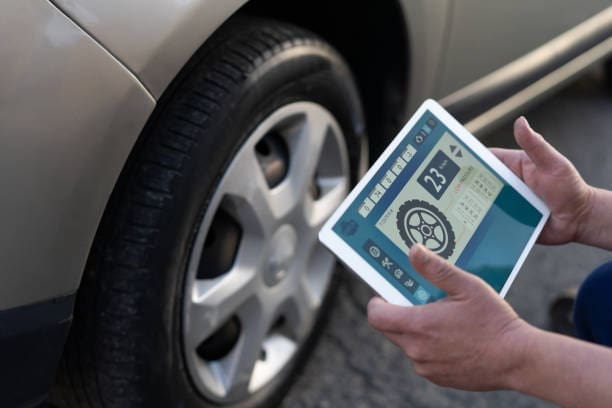Introduction
Table of Contents
ToggleHow to Calculate Mileage Reimbursement is a critical component of many business expense systems, designed to compensate employees for the cost of using their vehicles for work-related travel. With the changing economic landscape and fluctuating fuel prices, understanding how to calculate mileage reimbursement accurately and why it’s important to keep up-to-date with current rates is essential for both employees and employers. This guide will provide a detailed overview of the calculation process and highlight the reasons for regularly checking reimbursement rates.
Understanding Mileage Reimbursement

What is Mileage Reimbursement?
Mileage reimbursement is a method used by companies to repay employees for the costs incurred while using their vehicles for business purposes. This typically includes travel for meetings, conferences, client visits, and other work-related activities. The reimbursement rate is usually set per mile or kilometer traveled and is intended to cover expenses such as fuel, wear and tear, maintenance, insurance, and depreciation.
Importance of Mileage Reimbursement
- Fair Compensation: Ensures that employees are fairly compensated for the out-of-pocket expenses incurred during business travel.
- Tax Compliance: Helps companies comply with tax regulations as mileage reimbursements are often tax-deductible.
- Employee Satisfaction: Boosts morale by recognizing and compensating employees for their efforts and expenses.
How to Calculate Mileage Reimbursement in 2024
Step 1: Determine Eligible Mileage
The first step in calculating mileage reimbursement is to determine the total eligible miles driven for business purposes. This involves:
- Tracking Travel: Employees should keep a detailed log of all work-related trips, including the date, starting point, destination, purpose of the trip, and the number of miles driven.
- Excluding Commutes: Mileage for commuting between home and the regular place of work is not eligible for reimbursement.
Step 2: Check the IRS Standard Mileage Rate
For those in the United States, the Internal Revenue Service (IRS) sets a standard mileage rate each year, which serves as a guideline for mileage reimbursement. The rate is designed to cover the average costs of operating a vehicle for business purposes. For 2024, the IRS standard mileage rate is expected to be adjusted to reflect changes in fuel prices, insurance, and other vehicle-related costs.
Step 3: Multiply Mileage by the Standard Rate
Once you have determined the total eligible miles and the applicable mileage rate, the reimbursement amount can be calculated using the following formula:
Reimbursement Amount=Total Eligible Miles×Standard Mileage Rate\text{Reimbursement Amount} = \text{Total Eligible Miles} \times \text{Standard Mileage Rate}Reimbursement Amount=Total Eligible Miles×Standard Mileage Rate
For example, if an employee drove 500 miles for business purposes and the IRS standard mileage rate for 2024 is $0.65 per mile, the reimbursement would be:
500 miles×$0.65 per mile=$325500 \text{ miles} \times \$0.65 \text{ per mile} = \$325500 miles×$0.65 per mile=$325
Step 4: Verify Company Policies
Some companies may have their reimbursement policies that differ from the IRS standard rate. It is important to verify if the company uses a different rate or has additional requirements for mileage reimbursement. Always ensure that the reimbursement process aligns with both company policies and IRS guidelines.
Why You Should Always Check Rates
Fluctuating Fuel Prices
Fuel prices can vary significantly over time due to factors such as geopolitical events, natural disasters, changes in supply and demand, and economic conditions. These fluctuations can have a substantial impact on the cost of operating a vehicle. Keeping up-to-date with the current mileage rates ensures that reimbursement amounts are fair and reflective of current costs.
Economic Conditions
Inflation, changes in interest rates, and overall economic conditions can affect vehicle operating costs, including maintenance, insurance, and depreciation. Regularly checking mileage rates helps ensure that reimbursement amounts remain adequate to cover these expenses.
IRS Updates
The IRS reviews and updates the standard mileage rate annually to reflect changes in vehicle operating costs. Staying informed about these updates is crucial for accurate reimbursement calculations and tax compliance. Using outdated rates can result in under-compensation for employees or potential tax issues for employers.
Company Policy Changes
Companies may periodically review and adjust their mileage reimbursement policies in response to changes in economic conditions, business needs, or industry standards. Regularly checking for updates to company policies ensures that employees are reimbursed according to the most current guidelines.
Competitive Benchmarking
For companies, staying competitive in terms of employee benefits and compensation is important for attracting and retaining talent. Offering an up-to-date and fair mileage reimbursement rate can be a key differentiator. Regularly checking industry benchmarks and updating reimbursement rates accordingly can help maintain competitiveness.
Best Practices for Managing Mileage Reimbursement

Implement a Clear Policy
Having a clear and comprehensive mileage reimbursement policy helps ensure consistency and transparency. The policy should outline eligible travel, documentation requirements, the reimbursement rate, and the process for submitting and approving mileage claims.
Use Technology for Tracking
Utilizing technology such as mileage tracking apps or GPS systems can streamline the process of recording and verifying business travel. These tools can automatically log trips, calculate distances, and generate reports, reducing the administrative burden and minimizing errors.
Educate Employees
Ensure that employees are aware of the mileage reimbursement policy and understand how to track and submit their mileage claims. Providing training or resources on the importance of accurate record-keeping and the reimbursement process can help prevent misunderstandings and ensure compliance.
Regularly Review and Update Rates
Set a schedule for regularly reviewing and updating mileage reimbursement rates. This could be annually, in line with IRS updates, or more frequently if significant changes in fuel prices or economic conditions occur. Regular reviews help maintain fairness and accuracy in reimbursement.
Audit Reimbursement Claims
Periodically auditing mileage reimbursement claims can help identify discrepancies, prevent fraud, and ensure that the policy is being followed correctly. Audits can also provide insights into potential areas for improvement in the reimbursement process.
Conclusion
Calculating mileage reimbursement accurately and keeping up-to-date with current rates is essential for fair compensation, tax compliance, and employee satisfaction. By understanding the factors that influence mileage rates and implementing best practices for managing reimbursement, companies can ensure that they provide adequate and competitive compensation for work-related travel expenses. Regularly checking and updating mileage rates helps maintain fairness, accuracy, and compliance in the reimbursement process.



